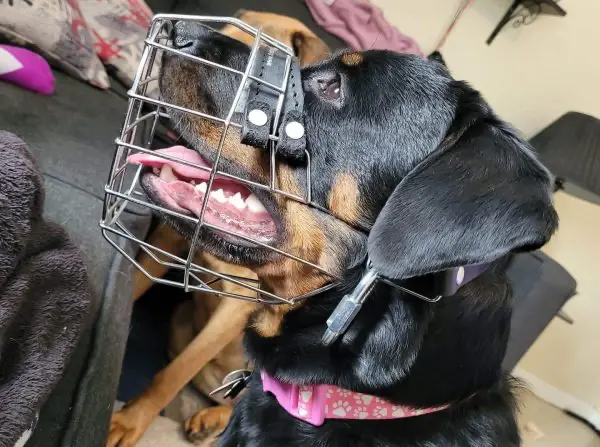
When Giorgio Mammoliti announced his intention to videotape the Dyke March, I announced my own intention to videotape Giorgio Mammoliti videotaping the Dyke March.
This was in 2011, and he was officially on the lookout for pro-Palestinian messaging that he felt had no place at a city-funded event.
Although there was no reason to believe Mammoliti had any ulterior or additional motive, the idea of a macho dude with a movie camera hovering around an event that seeks to create a safe space for women and trans folk (regardless of how much or how little they are wearing) did not sit well with many.
And when I found him standing next to the start of the march on Church in a tight blue T-shirt and jeans, holding his handicam aloft and staring through sunglasses at its viewscreen, well, it was nothing less than creepy.
But Mammoliti was relatively harmless. The fact that he’d made his intentions clear actually put him ahead of many men who show up at Pride events, particularly the Dyke March, with cameras. It may even have put him ahead of the Toronto police.
“Creepers” are an annual concern at the Dyke March.
“People who seemed like creepers definitely jumped in front of us [and] just started taking photos because we were topless,” says Lauryn Kronick, who was part of the bicycle contingent of this year’s march. “I felt like a tourist attraction a little bit. There was a lot of unwanted attention, and I definitely didn’t go topless in the Dyke March for attention.”
Kronick sits on Pride Toronto’s board of directors (though she emphasizes she’s not speaking for it) and has helped organize the Dyke March in the past. This wasn’t her first time going bare-chested in the event, but she found she received more unwanted attention than usual this year.
“Someone just jumping in and taking a photo isn’t to me a big deal. It’s the prolonged, repeated taking of photos and very obviously just standing there kind of ogling us that is uncomfortable and disrespectful.”
She appreciated when people asked permission. “And depending on who the person was, I did consent to having that photo taken.”
“Although we really can’t stop [photographers] from the sides, we certainly don’t want them in our face,” says Davina Hader, who served as a Dyke March marshal. “And that’s the concern. Some of them try to get right in there and get right up into the crowd of the march, and that’s definitely a no-no.”
She says that if she saw them, she “would just get into their face and tell them to get back.”
I was aware of these sensitivities and felt more than a little self-conscious when snapping pictures (of the more clothed participants) to tweet on NOW’s behalf. But I also took a couple of photos of my girlfriend, who rode alongside Kronick and was similarly garbed in pasties.
It was only when I later uploaded those images to my computer that I noticed one of my shots of her also featured a bike cop staring directly at me.
It was further surprising when I received an email shortly afterward from local gay journalist-curmudgeon Joe Clark. “Did you know the police were recording the Dyke March?” read the subject line. He linked me to a photo he’d taken of an unmarked black Chevrolet Suburban with a small camera mounted on its roof. Clark tells me in a subsequent message that he spoke to the plainclothes people inside, who said they were with the police and were recording the march “to show that everything went smoothly.”
The same vehicle with the same contraption was also present in photos and video captured by all-purpose activist Zach Ruiter at the previous evening’s Trans March.
Neither Pride Toronto co-chair Francisco Alvarez nor executive director Kevin Beaulieu was initially aware that any sort of video surveillance may have taken place.
“We certainly had no conversations with police about recording the Dyke March or any other aspect of the festival,” says Beaulieu. “Of course, it’s not something that someone would need permission from us to do, but also no discussions to that effect were had.”
Toronto police confirm to me that the SUV was theirs and that it was present at the Trans March, Dyke March and Pride Parade over the weekend.
“The video that they were taking was being streamed back to our Major Incident Command Centre” at police headquarters, says spokesperson Meaghan Gray.
She says that’s now standard operating procedure for policing any major event. And unless a specific incident is being investigated, the footage is deleted 72 hours afterward without being accessed.
So why the unmarked Suburban and plainclothes occupants? Gray says the Video Services Unit has a bunch of cars, and “that just happened to be the vehicle that was available this weekend. There’s no rhyme or reason to it.” The people weren’t in uniform because the Video Services team consists of civilians.
When told of the presence of the police camera at the Dyke March, Kronick is incensed. “I don’t understand why the cops would be recording, and that to me is really uncomfortable. I don’t want to be on any cop’s film roll,” she says. “It doesn’t make sense to me. They don’t have a place doing that.”
Hader, on the other hand, isn’t terribly bothered by it. She sits on the Toronto police’s LGBT liaison committee and found the officers at the march to be friendly. The civilian creepers annoyed her much more.
“As far as surveillance goes – well, honestly, we were taking the streets. What else can you say?”
jonathang@nowtoronto.com | @goldsbie













